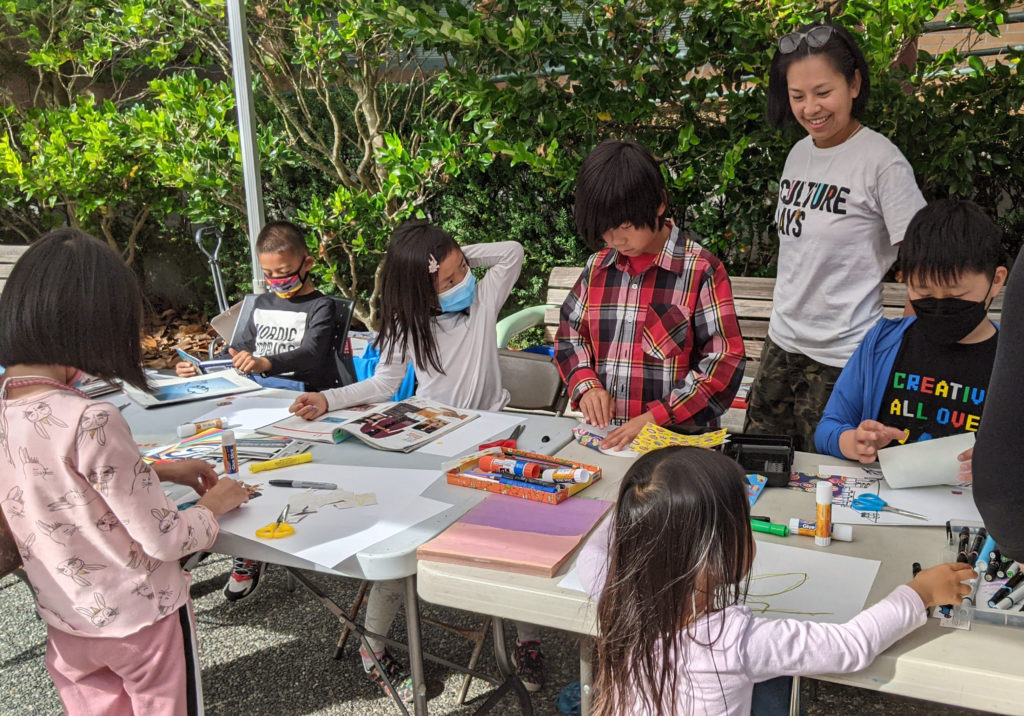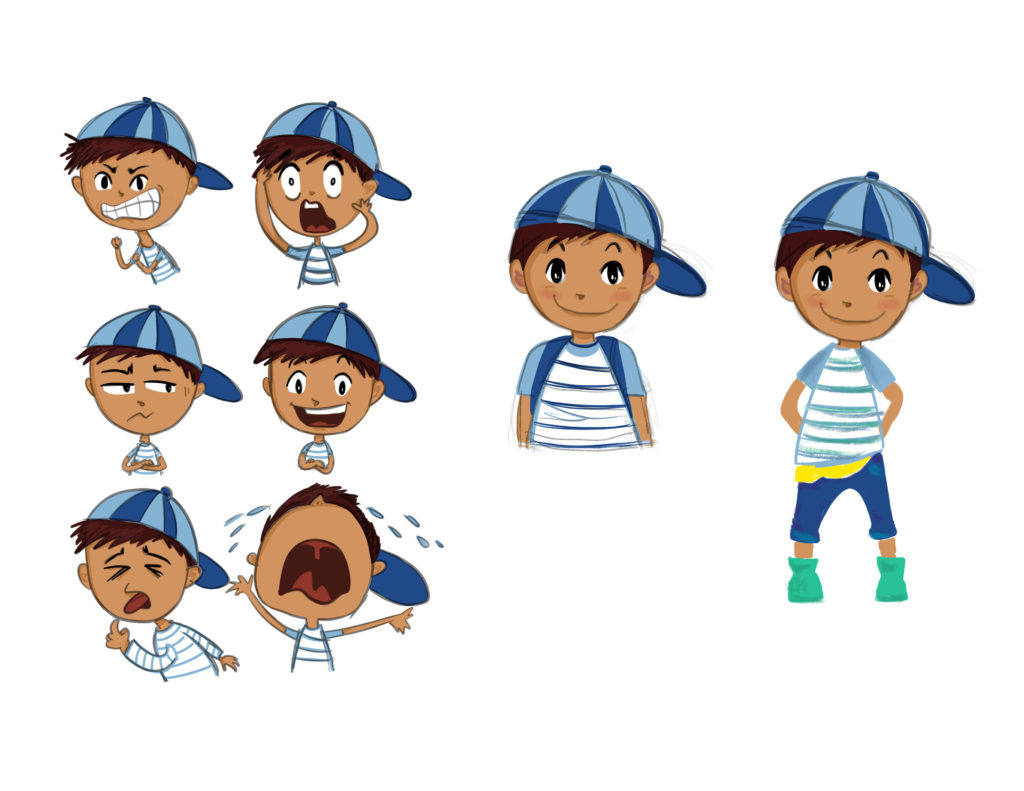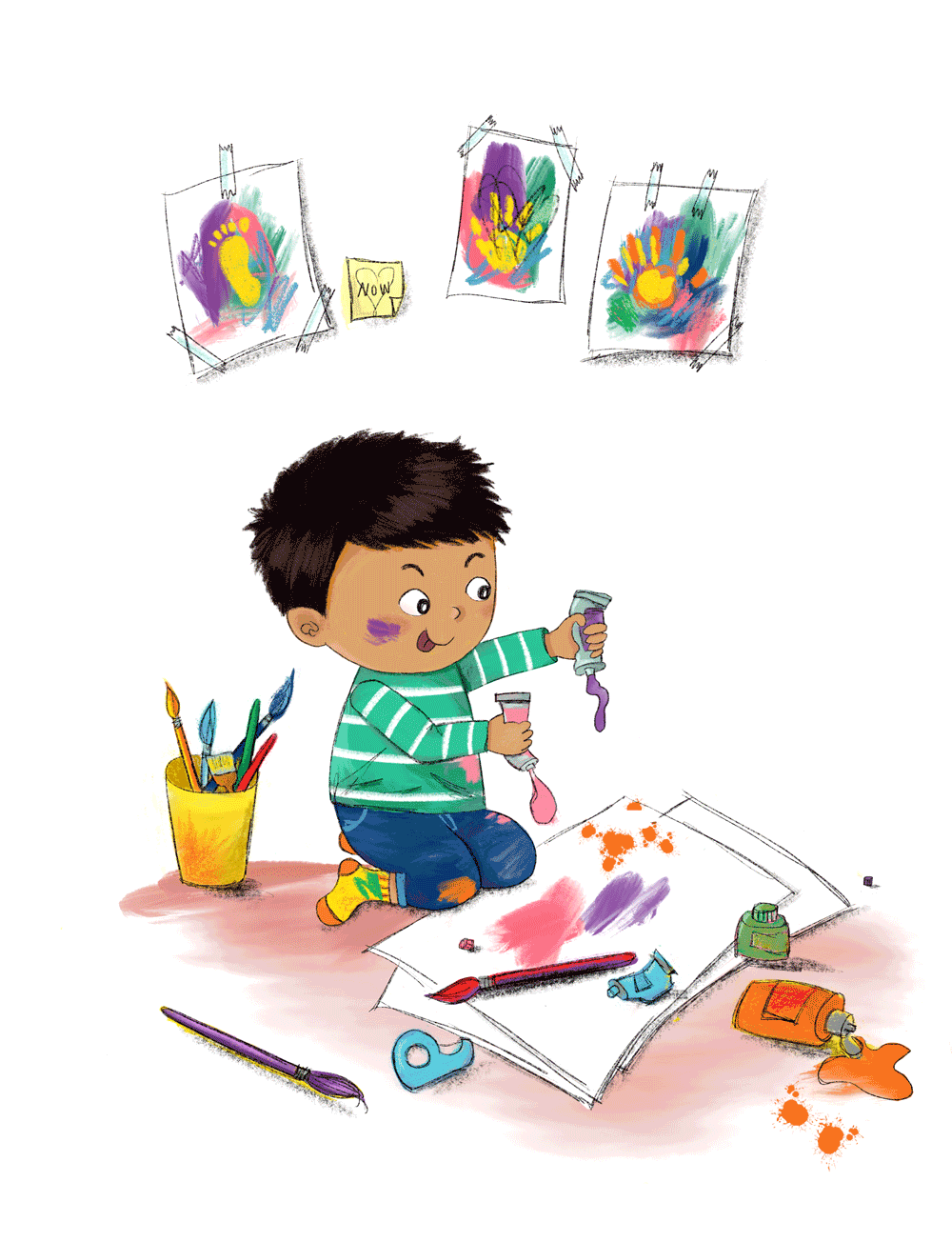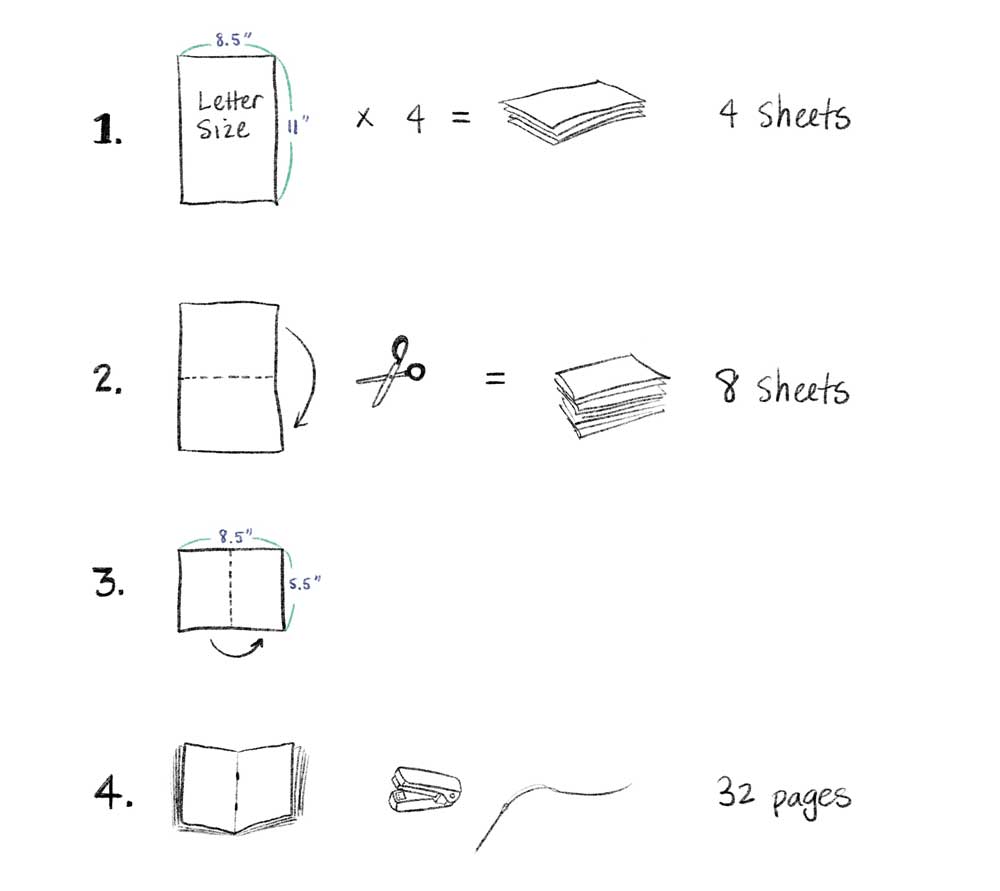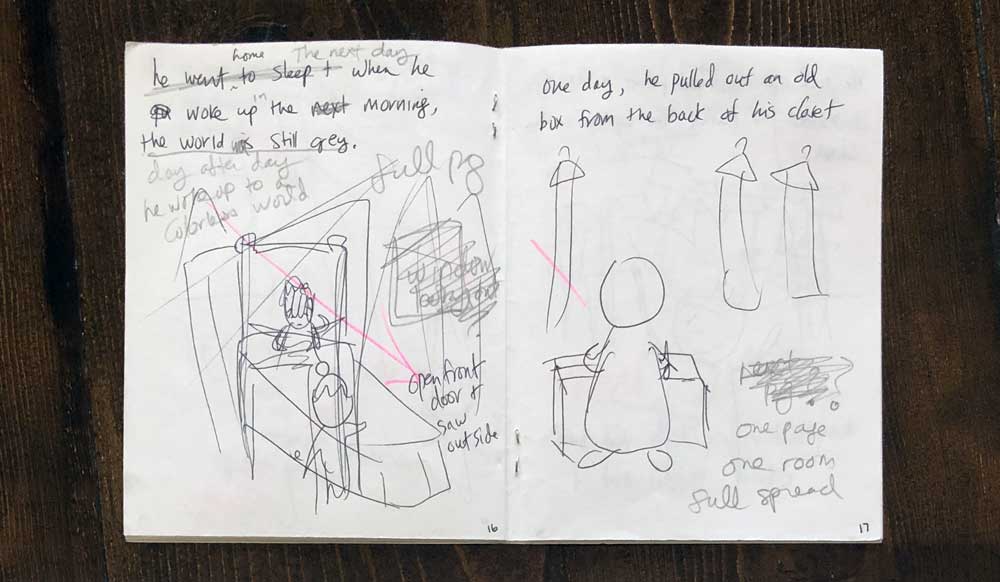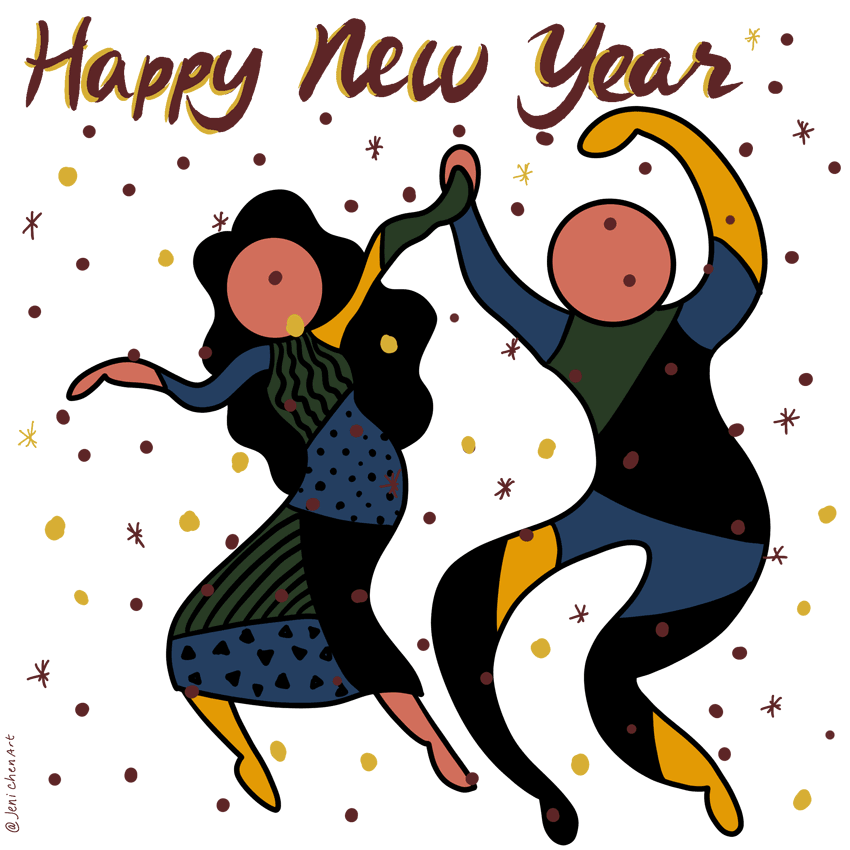I had so much fun at my BC Culture Days event: Art Journaling for Beginners. It was a sunny day and I had my favorite person in the world (my son EJ) helping me. While setting up, we could hear beautiful live music, performed by the Camilli Quartet. My event was scheduled from 1pm-3pm but we started earlier and ended after 4pm. A boy refused to leave and his mom had to drag him away so the volunteers could put away the tables and chairs.
My original plan was to do a live art journaling demo and people could try out my materials. I brought different kinds of pens: brush pens, alcohol markers, thin & thick Sharpies, thin & thick markers, crayons, water soluble crayons, colour pencils, highlighters. I also brought stickers, washi tapes, origami papers, construction papers in addition to magazines.
But the kids just kept coming that I only had time to show them the finished art journal page that I did in my step-by-step video. I described quickly that I drew myself as a fairy, cut out pictures and words that I liked from the magazines and encourage them to do whatever they want. I gave them 11”x17” printer papers and they were free to use anything on the table and cut from the magazines. Sometimes the kids would ask again to verify that they could really cut from any magazines.
We had toddlers, teenagers and adults visiting the booth. Soon the volunteers had to bring me another table and more chairs to fit all the materials and kids.
A mom asked me in conversation what’s the purpose of this activity. I told her we were just playing, trying things out with no specific results in mind. Sometimes that’s how we get brand new ideas. Her 3-year old son wanted to draw dinosaurs but didn’t know how. I told his mom that we were not here to show him how “I” draw a dinosaur. After a while, he put several squiggly lines together and totally captured the essence of a dinosaur! His mom was so proud! After some encouragements, he went on to draw a bunch of dinosaurs that he could name, a T-Rex, Pterodactyl, etc.
My art director EJ made an origami frog to entertain the little boy who then made a boat that looked like a flying boat for me. Another little girl started to put dots in different colors all over her paper and I told her that’s a great idea and I am going to do that in my art journal too! After she’s done, she made a medal looking piece of art for me. I was so happy!
I also brought my printmaking and book binding materials in case people got bored and wanted to try different things but we didn’t even have time to get to those. The most popular materials among the kids were the stickers, washi tapes and origami papers. My son started teaching kids and adults how to make origami lotus flowers, frogs, etc. When he was younger, he made several Youtube videos teaching people how to make his made-up origami stuff. So cute.
I was really happy to see how people came up with different art using the same materials. It’s like back in art school, one of the best things was to see how my classmates all interpreted the homework assignment so differently. My art teacher would say, he was not teaching us how “he” would draw but guiding us to express ourselves.
Picasso said: “It took me four years to paint like Raphael, but a lifetime to paint like a child” and “Every child is an artist. The problem is how to remain an artist once he grows up.”
I felt like I was one of the kids during this event. Although I was physically tired afterward, I felt happy.
Leave a Comment